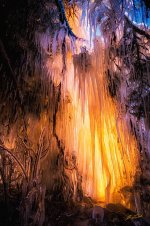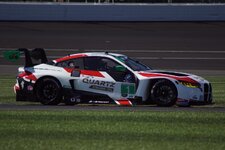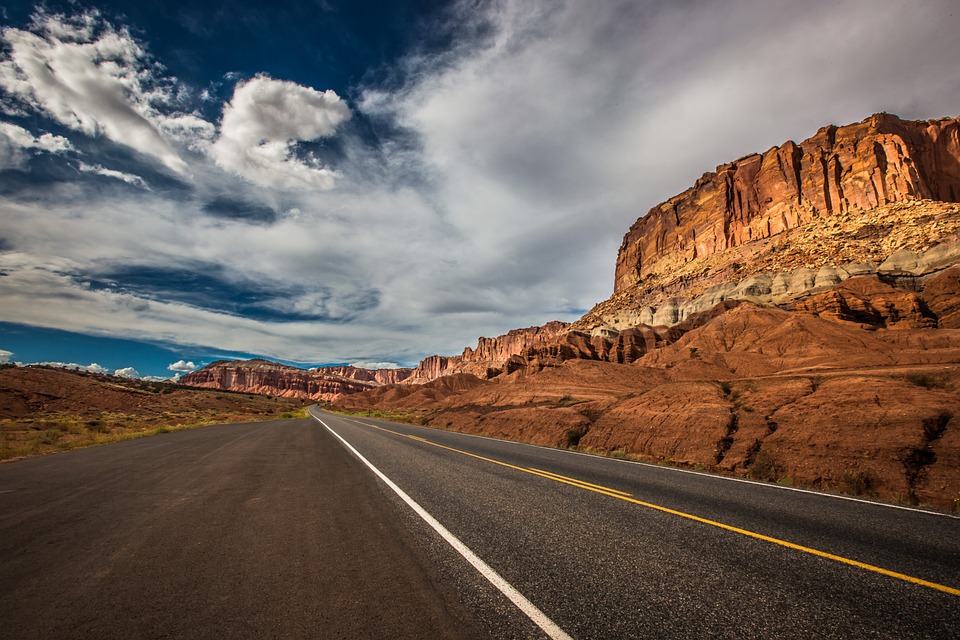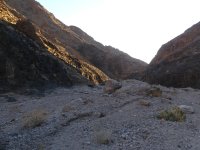-
Features
-
Friends of IIDBFriends Recovering from Religion United Coalition of Reason Infidel Guy
Forums Council of Ex-Muslims Rational Skepticism
Social Networks Internet Infidels Facebook Page IIDB Facebook Group
The Archives IIDB Archive Secular Café Archive
You are using an out of date browser. It may not display this or other websites correctly.
You should upgrade or use an alternative browser.
You should upgrade or use an alternative browser.
General Photography Thread
- Thread starter Jimmy Higgins
- Start date
- Joined
- Oct 22, 2002
- Messages
- 46,768
- Location
- Frozen in Michigan
- Gender
- Old Fart
- Basic Beliefs
- Don't be a dick.
Worldtraveller
Veteran Member
I want to learn how to do a composite like that. I have some good pics of a Brown Booby in a dive like that. They would make a great series, I think.
Amazing dude...!
- Joined
- Oct 22, 2002
- Messages
- 46,768
- Location
- Frozen in Michigan
- Gender
- Old Fart
- Basic Beliefs
- Don't be a dick.

Photographer Jack Trost said:Boy did I stumble upon a treasure this afternoon. I found a tree along the shore of Lake Superior that had been doused with waves and frozen in icicles. I am not fibbing when I say I was able to stand under it.
So I waited to see what sort of sunset I'd be treated with. Am I glad I waited to find out. This is the result of the sunset shining through the walls of ice over the tree.
hurtinbuckaroo
Contributor
View attachment 30842
Photographer Jack Trost said:Boy did I stumble upon a treasure this afternoon. I found a tree along the shore of Lake Superior that had been doused with waves and frozen in icicles. I am not fibbing when I say I was able to stand under it.
So I waited to see what sort of sunset I'd be treated with. Am I glad I waited to find out. This is the result of the sunset shining through the walls of ice over the tree.
That’s spectacular.
Jimmy Higgins
Contributor
- Joined
- Jan 31, 2001
- Messages
- 50,428
- Basic Beliefs
- Calvinistic Atheist
Went to Mid-Ohio with my daughter... so I wasn't able to concentrate too much on photos. Also my first time to Mid-Ohio, so didn't know what was what and where. But I got a few nice shots. This is just before the Honda bridge, which is just after the S curves, and provides an easy and fence unobstructed view of the cars.

This was using my Sony DSC-HX20V (f/5, 1/400) which is point and click, but also has manual. I was forcing the Manual because I wanted the images to be as quick as possible while using ISO 100. It isn't a DSLR, but managed. Would have brought the DSLR, but didn't know the level of pack mule I was going to be.

This was using my Sony DSC-HX20V (f/5, 1/400) which is point and click, but also has manual. I was forcing the Manual because I wanted the images to be as quick as possible while using ISO 100. It isn't a DSLR, but managed. Would have brought the DSLR, but didn't know the level of pack mule I was going to be.
Jimmy Higgins
Contributor
- Joined
- Jan 31, 2001
- Messages
- 50,428
- Basic Beliefs
- Calvinistic Atheist
This photo guy really pissed me off. I had a great spot for tracking the cars for photos at Mid-Ohio (just past the Essess curves and where there are no fences, and he gets in the way!
Dumb luck (well really any good photos by me are dumb luck), this shot frames perfectly. No cropping or photoshop. I did have the camera set for auto (action shots), so it managed aperture, shutter, ISO, etc...

Dumb luck (well really any good photos by me are dumb luck), this shot frames perfectly. No cropping or photoshop. I did have the camera set for auto (action shots), so it managed aperture, shutter, ISO, etc...

- Joined
- Oct 22, 2002
- Messages
- 46,768
- Location
- Frozen in Michigan
- Gender
- Old Fart
- Basic Beliefs
- Don't be a dick.
I just watched that race on TV yesterday. It was a helluva race.
Jimmy Higgins
Contributor
- Joined
- Jan 31, 2001
- Messages
- 50,428
- Basic Beliefs
- Calvinistic Atheist
The stadium truck race after saw Robby Gordon’s son go from third to first in the Essess curve on the last lap. We had packed up and managed to be atop the hill there when it happened. Didn’t have camera up for it.I just watched that race on TV yesterday. It was a helluva race.
Will Power managed a magnificent comeback! Sad about the McClaren team. Saw OWard dropping down and knew his day was done. Daughter was happy Palou got second.
Jimmy Higgins
Contributor
- Joined
- Jan 31, 2001
- Messages
- 50,428
- Basic Beliefs
- Calvinistic Atheist
Jimmy Higgins
Contributor
- Joined
- Jan 31, 2001
- Messages
- 50,428
- Basic Beliefs
- Calvinistic Atheist
Jimmy Higgins
Contributor
- Joined
- Jan 31, 2001
- Messages
- 50,428
- Basic Beliefs
- Calvinistic Atheist
So I did some reading on motorsports photography and two things I was observing while taking images while at Indy was sunlight and shutter speed. I generally like taking long photos because my main passion is waterfall photography, so I've kind of trailed off in the complete opposite direction with motorsports. I was finding it so much easier to take photos at 1/1250 than 1/400 or even 1/800. At ISO 100, to get to that 1/1250, you need a lot of sunlight. I didn't have that at Mid-Ohio, and it was on and off at Indy. When the sun was out, I was able to take very quick shots, which made tracking the cars a lot easier at 300 mm times whatever for the digital conversion. When the sun wasn't out as much, I was clicking back down to ISO 200 and 400 in order to make the shutter speed work. The results of doing this was better photos, and really having no idea at all in looking at the image, what ISO I was using. I could see grain on the late evening shots I took which probably had ISOs of 1600 and 3200.
So I guess what I learned is that ISO isn't nearly as important between 100 and 400 in digital photography in motorsports as is adherence to shutter speed. This might be a "no duh!" for some, but I'm pretty stupid so, it was a learning experience for me.
Admittedly, I think this might be a tad underexposed, but it is one of my favorites from the weekend. One thing I was dealing with was the dynamic resolution issues with all the pavement (dark gray) and cars (lots of white) clashing with the exposure meter, and not underexposing the blacks while not overexposing the whites.

So I guess what I learned is that ISO isn't nearly as important between 100 and 400 in digital photography in motorsports as is adherence to shutter speed. This might be a "no duh!" for some, but I'm pretty stupid so, it was a learning experience for me.
Admittedly, I think this might be a tad underexposed, but it is one of my favorites from the weekend. One thing I was dealing with was the dynamic resolution issues with all the pavement (dark gray) and cars (lots of white) clashing with the exposure meter, and not underexposing the blacks while not overexposing the whites.

Shadowy Man
Contributor
Simon d’Entremont has a good YouTube channel on photography and discusses ISO in the following video (among many others):
hurtinbuckaroo
Contributor
I’ve found little or no noticeable difference between ISO 100, 200, and 400. Even 800, depending on the subject.
Jimmy Higgins
Contributor
- Joined
- Jan 31, 2001
- Messages
- 50,428
- Basic Beliefs
- Calvinistic Atheist
When did this happen?! Why wasn't I given the memo?I’ve found little or no noticeable difference between ISO 100, 200, and 400. Even 800, depending on the subject.
I'm really interested in what ISO even is for digital photography. For film, wasn't it a physical think for the material used on the film to capture light? So it an inherent property of the film, where as cameras, it can be a convergence of programming, sensor design, etc...
When I was going through my picks, I was using my TV, so it was a large monitor, which obviously would show flaws easier... I think. And even on a 40-inch (I think) monitor, I wasn't seeing ANY issues until I got to 1600 or 3200 ISO (or should I say "ISO"?). Knowing, this, I might be defaulting to 400 ISO, or to the point where I'm max'ing out on the shutter speed I need. This would also help in nature photography where you need the mid range for the aperture which could extend the shutter a bit long.
bilby
Fair dinkum thinkum
- Joined
- Mar 6, 2007
- Messages
- 40,205
- Gender
- He/Him
- Basic Beliefs
- Strong Atheist
Yeah, the silver halide crystal size determines the ISO for film - large crystals require less exposure time than smaller ones, but produce literally grainy photos if they are large enough to be seen once the negatives have been enlarged.For film, wasn't it a physical think for the material used on the film to capture light?
Wartime surveillance photos from reconnaissance aircraft used high ISO ultra fast film to avoid blurring due to the speed of the plane, giving the characteristically grainy look of such pictures.
1600 and 3200 ISO film were used in large quantities by military surveillance, particularly for airborne surveillance missions, until good quality digital cameras became available.
I have sadly lost my 1600 ISO black and white photos from the Caboolture air show in 1994, which gave a real period feel to the WWII era planes that were flying by.
hurtinbuckaroo
Contributor
In digital, the ISO setting is related to the noise level that shows up when the sensor sensitivity is being taxed. The camera manufacturers have been working hard on reducing noise levels at high ISO, and newer cameras perform much better than those from even five years ago.When did this happen?! Why wasn't I given the memo?I’ve found little or no noticeable difference between ISO 100, 200, and 400. Even 800, depending on the subject.
I'm really interested in what ISO even is for digital photography. For film, wasn't it a physical think for the material used on the film to capture light? So it an inherent property of the film, where as cameras, it can be a convergence of programming, sensor design, etc...
When I was going through my picks, I was using my TV, so it was a large monitor, which obviously would show flaws easier... I think. And even on a 40-inch (I think) monitor, I wasn't seeing ANY issues until I got to 1600 or 3200 ISO (or should I say "ISO"?). Knowing, this, I might be defaulting to 400 ISO, or to the point where I'm max'ing out on the shutter speed I need. This would also help in nature photography where you need the mid range for the aperture which could extend the shutter a bit long.
Shadowy Man
Contributor
I believe the ISO in digital cameras is related to the gain of the sensor; that is, how many DN you get per detected electron. It effectively amplifies the signal to better utilize the dynamic range of the camera, but at low light levels the signal-to-noise can be higher so the noise gets amplified as well.






